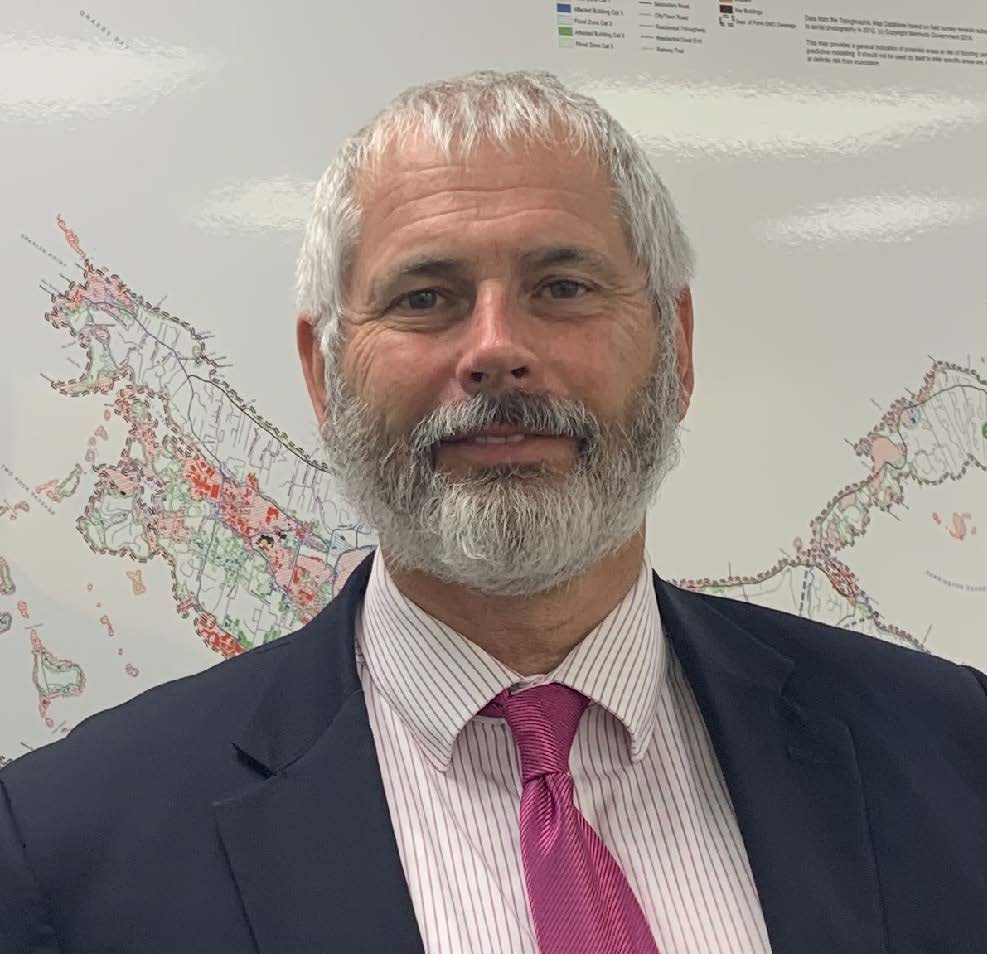by Erin Silver
Steve Cosham is the National Disaster Coordinator for the Ministry of National Security. He also leads the Disaster Risk Reduction and Mitigation Team as it manages every kind of disaster – from potential terrorist attacks to assisting the Ministry of Health with the pandemic. His oversight includes weather disasters like hurricanes, too. The Royal Gazette spoke to Steve Cosham ahead of hurricane season for the latest information and updates on how Bermuda prepares for the worst.
Royal Gazette: How does Bermuda know when a storm is coming? Who is monitoring and what happens behind the scenes?
Steve Cosham: Locally, we have the Bermuda Weather Service and we’re in constant liaison with the director. We also rely on the National Hurricane Centre in the United States. It’s monitored on a daily basis. In fact, we look at updates every six hours. We’re in constant communication and are always discussing what the latest technology is telling us in terms of any storms in the forecast.
RG: When a hurricane is coming, what processes are in place to prepare the island?
SC: Preparedness starts months beforehand to make sure planning from all agencies has started and is in sync. During Bermuda’s Hurricane Preparedness Week, which takes place every year during the first week of June, we test all of our systems and put out five days of messaging for the public. We make sure our equipment is running and that our plans proceed smoothly. This way, when a hurricane comes, we know our agencies are prepared and that we can engage with the public.
RG: What happens right before a hurricane?
SC: Several days before a hurricane comes to us, the NHC and BWS will issue alerts to the Emergency Measures Organisation when the storm is about 1,000 miles away. Their data will give us a seven-day projection and they’ll monitor it closely. In a typical season, we may have 10 to 12 storms that either dissipate, veer off course or hit us directly. About three days out is when the real messaging starts— by then the storm is 500 to 600 miles out and all the forecast models seem to be in sync. We have a meeting two days out to discuss the possibilities of what the storm will do. Storms can pick up speed or decrease in speed. It will often change. One day out, we will have another EMO meeting. By then, the timing is more certain, even though things can still change. At that point we discuss when the island will close down. We will close government and private businesses first, then schools or summer camps so parents can pick up their kids or be home when their kids get there. We use public transportation to take people home. Then public transportation closes. Buses go off the roads at 50 knot winds. This means drivers have to have buses at their depots and it gives drivers time to get home. Then we look at closing the Causeway. We ramp up and ramp down. It’s a matter of pulling the trigger at the right time. It takes a lot of effort to prepare.
RG: What advice do you share with people during Hurricane Preparedness Week or when a hurricane is imminent?
SC: We tell everybody to be off the road, hunker down and listen to the Emergency Broadcast Station on 100.1 FM. Radio stations are a great source of advice, and so is social media and traditional media like The Royal Gazette, but all this great information is covered during Hurricane Preparedness Week. There’s a theme for each day, so we go over things like personal safety, family safety, financial security, protecting your home and helping your community.
RG: If you had to summarise a few of the most important pieces of advice, what would they be?
SC: We tell people to have a radio with a battery in case the power goes out. Tune it to 100.1 FM, which is the government station. It ramps up with information 12 hours before and after a hurricane and we provide updates at the top and bottom of every hour. We also tell people to make sure they have enough food, medicines and everything they need for themselves, their families and their pets. Having two weeks worth of these supplies gives you a nice buffer. Test your chargers, batteries and generators in advance, and make sure you have the plywood and supplies you need to cover your windows and protect your home. Do not tape windows in an “X” to prevent shards from being blown around your home in a storm—a big pane of shooting glass is more dangerous. Make sure your insurance is up to date and that you have all documents and valuables properly stored. Also, ask your neighbours if they need help preparing—that can include people who live next door, or nearby schools and churches. They might need help putting away their garden furniture or securing their windows. The community generally doesn’t listen to our messaging in June, but by August when we are at greater risk of storms they are paying attention. We repeat our messaging then, but if people can get a head start getting the supplies they need in advance, they won’t be rushing or panicking at the last minute.
RG: What else does your unit do when hurricane season is over?
SC: The Disaster Risk Reduction and Mitigation team is made up of five people. We coordinate and simulate disaster and emergency planning on the island, which includes threats and hazards year ‘round. Hurricanes are high on the list, but we also plan for air crashes, work with the health department on pandemic-related issues and with the government’s cyber security board. We team up with the police for terrorist incidents, which are very low risk. We also have as part of the team, the national events coordinator who helps coordinate events like Hurricane Preparedness Week and communicate with the public.

